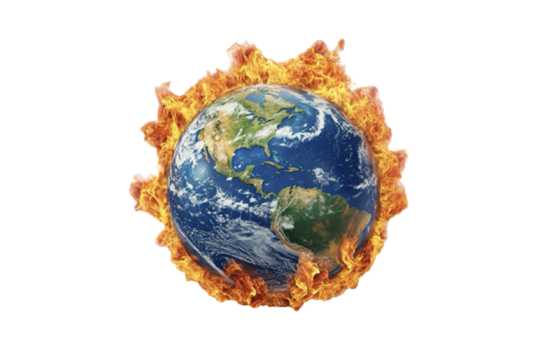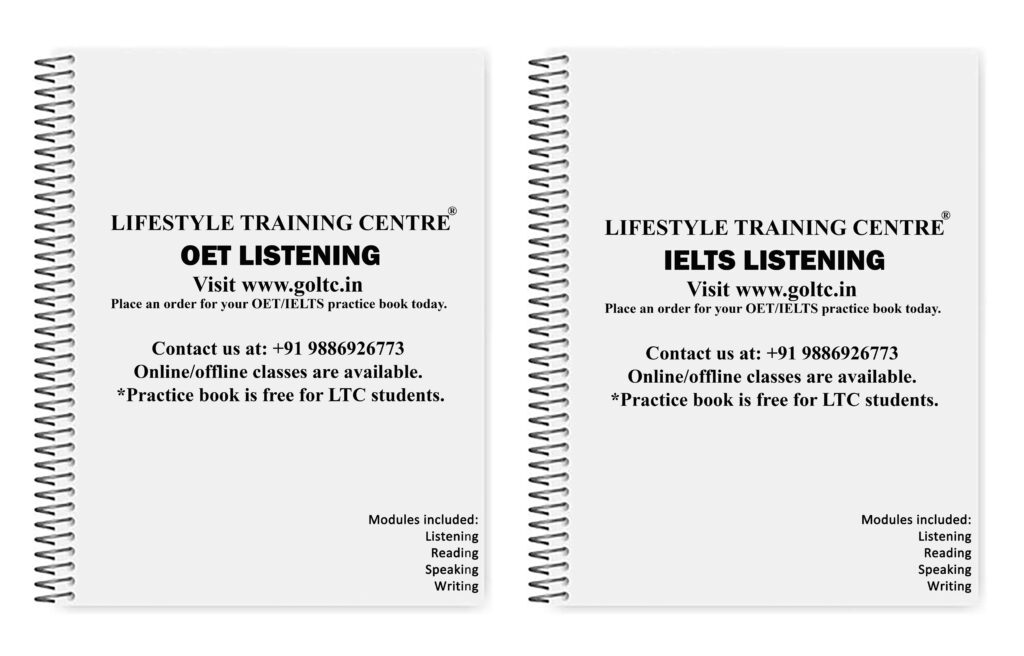Reading passage 1
Here are some facts that you probably didn’t know about diabetes. It is the world’s fastest growing disease. It is Australia’s 6th leading cause of death. Over 1 million Australians have it though 50% of those are as yet unaware. Every 10 minutes someone is diagnosed with diabetes. So much for the facts but what exactly is diabetes?
Diabetes is the name given to a group of different conditions in which there is too much glucose in the blood. Here’s what happens: the body needs glucose as its main source of fuel or energy. The body makes glucose from foods containing carbohydrate such as vegetables containing carbohydrate (like potatoes or corn) and cereal foods (like bread, pasta and rice) as well as fruit and milk. Glucose is carried around the body in the blood and the glucose level is called glycaemia. Glycaemia (blood sugar levels) in humans and animals must be neither too high nor too low, but just right. The glucose running around in the blood stream now has to get out of the blood and into the body tissues. This is where insulin enters the story. Insulin is a hormone made by the pancreas, a gland sitting just below the stomach. Insulin opens the doors that let glucose go from the blood to the body cells where energy is made. This process is called glucose metabolism. In diabetes, the pancreas either cannot make insulin or the insulin it does make is not enough and cannot work properly. Without insulin doing its job, the glucose channels are shut. Glucose builds up in the blood leading to high blood glucose levels, which causes the health problems linked to diabetes.
People refer to the disease as diabetes but there are actually two distinctive types of the disease. Type 1 diabetes is a condition characterized by high blood glucose levels caused by a total lack of insulin. It occurs when the body’s immune system attacks the insulin-producing beta cells in the pancreas and destroys them. The pancreas then produces little or no insulin. Type 1 diabetes develops most often in young people but can appear in adults. Type 2 diabetes is the most common form of diabetes. In type 2 diabetes, either the body does not produce enough insulin or the cells ignore the insulin. Insulin is necessary for the body to be able to use sugar. Sugar is the basic fuel for the cells in the body, and insulin takes the sugar from the blood into the cells.
The diagnosis of diabetes often depends on what type the patient is suffering from. In Type 1 diabetes, symptoms are usually sudden and sometimes even life threatening – hyperglycaemia (high blood sugar levels) can lead to comas – and therefore it is mostly diagnosed quite quickly. In Type 2 diabetes, many people have no symptoms at all, while other signs can go unnoticed, being seen as part of ‘getting older’.
Therefore, by the time symptoms are noticed, the blood glucose level for many people can be very high. Common symptoms include: being more thirsty than usual, passing more urine, feeling lethargic, always feeling hungry, having cuts that heal slowly, itching, skin infections, bad breath, blurred vision, unexplained weight change, mood swings, headaches, feeling dizzy and leg cramps.
At present there is no cure for diabetes, but there is a huge amount of research looking for a cure and to provide superior management techniques and products until a cure is found. Whether it’s Type 1 or Type 2 diabetes, the aim of any diabetes treatment is to get your blood glucose levels as close to the non-diabetic range as often as possible. For people with Type 1 diabetes, this will mean insulin injections every day plus leading a healthy lifestyle. For people with Type 2 diabetes, healthy eating and regular physical activity may be all that is required at first:
Sometimes tablets and/or insulin may be needed later on. Ideally blood glucose levels are kept as close to the non- diabetic range as possible so frequent self-testing is a good idea. This will help prevent the short-term effects of very low or very high blood glucose levels as well as the possible long-term problems. If someone is dependent on insulin, it has to be injected into the body. Insulin cannot be taken as a pill. The insulin would be broken down during digestion just like the protein in food. Insulin must be injected into the fat under your skin for it to get into your blood. Diabetes can cause serious complications for patients. When glucose builds up in the blood instead of going into cells, it can cause problems. Short term problems are similar to the symptoms but long term high blood sugar levels can lead to heart attacks, strokes, kidney failure, amputations and blindness. Having your blood pressure and cholesterol outside recommended ranges can also lead to problems like heart attack and stroke and in fact 2 out of 3 people with diabetes eventually die of these complications. Young adults age 18 – 44 who get type 2 diabetes are 14 times more likely to suffer a heart attack, and are up to 30 times more likely to have a stroke than their peers without diabetes. Young women account for almost all the increase in heart attack risk, while young men are twice as likely to suffer a stroke as young women. This means that huge numbers of people are going to get heart disease, heart attacks and strokes years, sometimes even decades, before they should.
Questions 1 – 7. Do the following statements reflect the views of the writer in Reading Passage 1? In boxes 1 – 7 on your answer sheet write:
YES if the statement agrees with the information
NO if the statement contradicts the statement
NOT GIVEN if there is no information on this in the passage
- Carbohydrate foods are the body’s source of glucose.
- Diabetics cannot produce insulin.
- Some patients develop diabetes due to faults in their own immune systems
- Hyperglycaemia leads to type 1 diabetes being diagnosed quite quickly.
- Artificial insulin is the most effective treatment for those patients requiring insulin.
- Frequent check ups at the doctor can drastically reduce the chances of suffering from problems related to diabetes.
- The majority of diabetics develop heart problems or suffer strokes.
Questions 8-11
Complete the following statements with the best ending from the box below. Write the appropriate letters A – H in boxes 8 – 11 on your answer sheet.
8 Bizarre as it may seem, many people with diabetes…
9 Insulin is a hormone that allows glucose to be absorbed by…
10 Non severe type 2 diabetes can be solely treated by…
11 Increases in diabetes related heart problems are mainly seen in…
A. a healthy lifestyle
B. never suffer any ill effects
C. women
D. people also suffering strokes
E. body cells
F. the pancreas
G. do not realise the fact
H. injections
Questions12-14
According to the text which of the following are symptoms of diabetes?
Choose THREE letters (A – G) and write them in boxes 12 – 14 on your answer sheet.
A hot flushes
B muscle pains
C nausea
D losing consciousness
E tiredness
F bleeding gums
G dilation of the eyes
Reading passage 2
Contaminating the Arctic
Our perception of the Arctic region is that its distance from industrial centers keeps it pristine and clear from the impact of pollution. However, through a process known as transboundary pollution, the Arctic is the recipient of contaminants whose sources are thousands of miles away. Large quantities of pollutants pour into our atmosphere, as well as our lakes, rivers, and oceans on a daily basis. In the last 20 years, scientists have detected an increasing variety of toxic contaminants in the North, including pesticides from agriculture, chemicals and heavy metals from industry, and even radioactive fall-out from Chernobyl. These are substances that have invaded ecosystems virtually worldwide, but they are especially worrisome in the Arctic.
Originally, Arctic contamination was largely blamed on chemical leaks, and these leaks were thought to be “small and localized.” The consensus now is that pollutants from around the world are being carried north by rivers, ocean currents, and atmospheric circulation. Due to extreme conditions in the Arctic, including reduced sunlight, extensive ice cover and cold temperatures, contaminants break down much more slowly than in warmer climates. Contaminants can also become highly concentrated due to their significantly lengthened life span in the Arctic.
Problems of spring run-off into coastal waters during the growth period of marine life are of critical concern. Spring algae blooms easily, absorbing the concentrated contaminants released by spring melting. These algae are in turn eaten by zooplankton and a wide variety of marine life. The accumulation of these contaminants increases with each step of the food chain or web and can potentially affect northerners who eat marine mammals near the top of the food chain. Pollutants respect no borders; transboundary pollution is the movement of contaminants across political borders, whether by air, rivers, or ocean currents. The eight circumpolar nations, led by the Finnish Initiative of 1989, established the Arctic Environmental Protection Strategy (AEPS) in which participants have agreed to develop an Arctic Monitoring and Assessment Program (AMAP). AMAP establishes an international scientific network to monitor the current condition of the Arctic with respect to specific contaminants. This monitoring program is extremely important because it will give a scientific basis for understanding the scope of the problem.
In the 1950’s, pilots traveling on weather reconnaissance flights in the Canadian high Arctic reported seeing bands of haze in the springtime in the Arctic region. It was during this time that the term “Arctic haze” was first used, referring to this smog of unknown origin. But it was not until 1972, that Dr. Glenn Shaw of the Geophysical Institute at the University of Alaska first put forth ideas of the nature and long-range origin of Arctic haze. The idea that the source was long range was very difficult for many to support. Each winter, cold, dense air settles over the Arctic. In the darkness, the Arctic seems to become more and more polluted by a buildup of mid-latitude emissions from fossil fuel combustion, smelting and other industrial processes. By late winter, the Arctic is covered by a layer of this haze the size of the continent of Africa. When the spring light arrives in the Arctic, there is a smog-like haze, which makes the region, at times, looks like pollution over such cities as Los Angeles.
This polluted air is a well-known and well-characterized feature of the late winter Arctic environment. In the North American Arctic, episodes of brown or black snow have been traced to continental storm tracks that deliver gaseous and particulate-associated contaminants from Asian deserts and agricultural areas. It is now known that the contaminants originate largely from Europe and Asia.
Arctic haze has been studied most extensively in Point Barrow, Alaska, across the Canadian Arctic and in Svalbard (Norway). Evidence from ice cores drilled from the ice sheet of Greenland indicates that these haze particles were not always present in the Arctic, but began to appear only in the last century. The Arctic haze particles appear to be similar to smog particles observed in industrial areas farther south, consisting mostly of sulfates mixed with particles of carbon. It is believed the particles are formed when gaseous sulfur dioxide produced by burning sulfur- bearing coal is irradiated by sunlight and oxidized to sulfate, a process catalyzed by trace elements in the air. These sulfate particles or droplets of sulfuric acid quickly capture the carbon particles, which are also floating in the air. Pure sulfate particles or droplets are colourless, so it is believed the darkness of the haze is caused by the mixed-in carbon particles.
The impact of the haze on Arctic ecosystems, as well as the global environment, has not been adequately researched. The pollutants have only been studied in their aerosol form over the Arctic. However, little is known about what eventually happens to them. It is known that they are removed somehow. There is a good degree of likelihood that the contaminants end up in the ocean, likely into the North Atlantic, the Norwegian Sea and possibly the Bering Sea — all three very important fisheries.
Currently, the major issue among researchers is to understand the impact of Arctic haze on global climate change. The contaminants absorb sunlight and, in turn, heat up the atmosphere. The global impact of this is currently unknown but the implications are quite powerful.
Questions 15-21
Read passage 2and look at the statements below. In boxes 15 – 21 on your answer sheet write:
TRUE if the statement is true
FALSE if the statement is false
NOT GIVEN if the information is not given in the passage
15 Industry in the Arctic has increased over the last 20 years.
16 Arctic conditions mean that the break down of pollutants is much accelerated
17 Pollution absorbed by arctic algae can eventually affect humans.
18 The AEPS has set up scientific stations in the Arctic to monitor pollution.
19 Arctic pollution can sometimes resemble US urban pollution.
20 Evidence that this smog has only occurred in the 20th Century has been found in the ice on the polar ice cap.
21 Research has shown that aerosol arctic pollutants remain the air indefinitely.
Questions 22-27. Complete the summary relating to Arctic Haze below.
Choose your answers from the box below the summary and write them in boxes 22 – 27 on your answer sheet. NB There are more words than spaces, so you will not use them at all.
Theories that the origins of spring, arctic haze, first seen over the ice cap in the 1950s, came from far away were at first not (22) …………………….. This haze is a smog formed in the dark, arctic winter by pollution delivered to the Arctic by storms (23)… …………………….. in Europe and Asia. It is known to be a recent phenomenon as proof from (24) ……………………… shows it only starting to occur in the 20th Century. The smog consists of sulphates and carbon, the latter creating the (25)…………………………. of the haze. Due to lack of research, the final destination of the pollution is unknown but it probably ends up in the (26)……………………………. and therefore into the food chain. Scientists are presently more worried about the (27) ……………………….effect it has on climate change.
Reading passage 3
The Story of Coffee
A. Coffee was first discovered in Eastern Africa in an area we know today as Ethiopia. A popular legend refers to a goat herder by the name of Kaldi, who observed his goats acting unusually friskily after eating berries from a bush. Curious about this phenomenon, Kaldi tried eating the berries himself. He found that these berries gave him renewed energy.
B. The news of this energy laden fruit quickly moved throughout the region. Coffee berries were transported from Ethiopia to the Arabian Peninsula, and were first cultivated in what today is the country of Yemen. Coffee remained a secret in Arabia before spreading to Turkey and then to the European continent by means of Venetian trade merchants.
C. Coffee was first eaten as a food though later people in Arabia would make a drink out of boiling the beans for its narcotic effects and medicinal value. Coffee for a time was known as Arabian wine to Muslims who were banned from alcohol by Islam. It was not until after coffee had been eaten as a food product, a wine and a medicine that it was discovered, probably by complete accident in Turkey, that by roasting the beans a delicious drink could be made. The roasted beans were first crushed, and then boiled in water, creating a crude version of the beverage we enjoy today. The first coffee houses were opened in Europe in the 17th Century and in 1675, the Viennese established the habit of refining the brew by filtering out the grounds, sweetening it, and adding a dash of milk.
D. If you were to explore the planet for coffee, you would find about 60 species of coffee plants growing wild in Africa, Malaysia, and other regions. But only about ten of them are actually cultivated. Of these ten, two species are responsible for almost all the coffee produced in the world: Coffea Arabica and Coffea Canephora (usually known as Robusta). Because of ecological differences existing among the various coffee producing countries, both types have undergone many mutations and now exist in many sub species.
E. Although wild plants can reach 10 – 12 metres in height, the plantation one reaches a height of around four metres. This makes the harvest and flowering easier, and cultivation more economical. The flowers are white and sweet-scented like the Spanish jasmine. Flowers give way to a red, darkish berry. At first sight, the fruit is like a big cherry both in size and in colour. The berry is coated with a thin, red film (epicarp) containing a white, sugary mucilaginous flesh (mesocarp). Inside the pulp there are the seeds in the form of two beans coupled at their flat surface. Beans are in turn coated with a kind of resistant, golden yellow parchment, (called endocarp). When peeled, the real bean appears with another very thin silvery film. The bean is bluish green verging on bronze, and is at the most 11 millimetres long and 8 millimetres wide.
F. Coffee plants need special conditions to give a satisfactory crop. The climate needs to be hot-wet or hot temperate, between the Tropic of Cancer and the Tropic of Capricorn, with frequent rains and temperatures varying from 15 to 25 Degrees C. The soil should be deep, hard, permeable, well irrigated, with well-drained subsoil. The best lands are the hilly ones or from just-tilled woods. The perfect altitude is between 600 and 1200 metres, though some varieties thrive at 2000-2200 metres. Cultivation aimed at protecting the plants at every stage of growth is needed. Sowing should be in sheltered nurseries from which, after about six months, the seedlings should be moved to plantations in the rainy season where they are usually alternated with other plants to shield them from wind and excessive sunlight. Only when the plant is five years old can it be counted upon to give a regular yield. This is between 400 grams and two kilos of arabica beans for each plant, and 600 grams and two kilos for robusta beans.
G. Harvesting time depends on the geographic situation and it can vary greatly therefore according to the various producing countries. First the ripe beans are picked from the branches. Pickers can selectively pick approximately 250 to 300 pounds of coffee cherry a day. At the end of the day, the pickers bring their heavy burlap bags to pulping mills where the cherry coffee can be pulped (or wet milled). The pulped beans then rest, covered in pure rainwater to ferment overnight. The next day the wet beans are hand-distributed upon the drying floor to be sun dried. This drying process takes from one to two weeks depending on the amount of sunny days available. To make sure they dry evenly, the beans need to be raked many times during this drying time. Two weeks later the sun dried beans, now called parchment, are scooped up, bagged and taken to be milled. Huge milling machines then remove the parchment and silver skin, which renders a green bean suitable for roasting. The green beans are roasted according to the customers’ specifications and, after cooling, the beans are then packaged and mailed to customers.
Questions 28-33. The reading passage on The Story of Coffee has 7 paragraphs A – G. From the list of headings below choose the most suitable headings for paragraphs B – G.
List of headings
i Growing Coffee
ii Problems with Manufacture
iii Processing the Bean
iv First Contact
v Arabian Coffee
vi Coffee Varieties
vii Modern Coffee
viii The Spread of Coffee
ix Consuming Coffee
x Climates for Coffee
xi The Coffee Plant
Example: Paragraph A iv
28 Paragraph B
29 Paragraph C
30 Paragraph D
31 Paragraph E
32 Paragraph F
33 Paragraph G
Questions 34-36. Complete the labels on the diagram of a coffee bean below. Choose your answers from the text and write them in boxes 34 – 36 on your answer sheet.

Questions 37-40
Using the information in the passage, complete the flow chart below. Write your answers in boxes 37 – 40 on your answer sheet. Use NO MORE THAN THREE WORDS from the passage for each answer.

How did it go? Please share your feedback in the comment section below:
VIEW ANSWER KEYSIELTS Speaking Task Topics
Click on any topic to explore more!
Names

Learn about the importance of names and their cultural significance.
Study / Job

Discuss various aspects of studying and working in different fields.
Hometown

Explore the charm of your hometown and its unique features.
Accomodation

Understand various types of accommodation and living situations.
Weather

Learn about how weather influences daily life and activities.
Time

Discuss the concept of time, its importance, and time management.
Television

Talk about the role of television in modern entertainment.
Museum

Discuss the cultural importance of museums and historical exhibits.
Holidays

Explore the significance of holidays and different celebrations.
Films

Learn about the impact of films on culture and society.
Leisure Time

Discuss how leisure activities impact personal well-being.
Sport

Talk about the role of sports in health, entertainment, and culture.
Vegetables and Fruits

Discuss the health benefits and importance of fresh produce.
Maths

Explore the role of mathematics in various aspects of life.
Sky

Discuss the beauty and scientific significance of the sky.
Clothes&Fashion

Explore how clothing reflects culture and personal expression.
Weekend

Discuss the importance of weekends and ways people relax.
Reading

Learn about the importance of reading and various reading habits.
Sleep

Explore how sleep impacts physical and mental well-being.
Trees&Plants

Discuss the environmental and health benefits of plants.
Newspaper

Discuss the evolving role of newspapers in the digital age.
Texting

Explore the role of text messaging in modern communication.
Memorising

Learn techniques for improving memory and memorization.
Travelling

Discuss the importance and impact of traveling in modern society.
Communication

Explore the modes and significance of communicating well
Letter&Email

Explore the differences and significance of letters vs. emails.
Swimming

Discuss the benefits of swimming for health and fitness.
Snacks

Explore the role of snacks in daily nutrition and lifestyle.
Photography

Discuss photography’s cultural and artistic significance.
Help

Talk about the importance of offering and receiving help.
History

Discuss historical events and their impact on modern society.
Handwriting

Explore the significance of handwriting in education and culture.
Music

Learn about the influence of music on emotions and society.
Colours

Discuss how colours affect perception and mood.
Teachers

Explore the role of teachers in shaping students’ futures.
Being Alone

Talk about the experience and benefits of spending time alone.
Teamwork

Learn the importance of teamwork in professional and social contexts.
Countryside & City

Explore the charm and benefits of living in the countryside.
Social Media

Discuss the impact of social media on society and relationships.
Friends

Explore the importance of friendships in life.
Artificial Intelligence (AI)

Talk about the future of AI and its role in society.
Climate Change

Discuss the causes and consequences of climate change.
Transportation

Explore different modes of transportation in your area.
Sustainable Transportation

Explore ways to make transportation more environmentally friendly.
Space Exploration

Learn about the latest advancements in space exploration.
Shopping

Explore how shopping influences culture and the economy.
Modern Technology

Discuss how modern technology is reshaping society.
Technology

Learn about the role of technology in everyday life.
Sustainable Living

Explore ways to live sustainably for the future of the planet.
Globalisation

Learn about the effects of globalisation on society and economies.
Global Warming

Discuss the causes, effects, and solutions to global warming.
Gender Equality

Explore the importance of gender equality in modern society.
Health and Fitness

Discuss the importance of maintaining a healthy lifestyle.
Renewable Energy

Learn about renewable energy sources and their impact on the environment.
Cultural Traditions in Kerala

Explore the unique cultural traditions of Kerala, your hometown.
Cultural Traditions in Your Country

Learn about the cultural traditions in your country.
Education System

Discuss the education system in your country and its effectiveness.
Traditional Cuisine

Explore the significance of traditional cuisines in your culture.
Do you need printed IELTS/ OET practice material? Place your order today. Available now for just Rs: 1,100 (including shipping all across India) Contact us at our WhatsApp number: +91 9886926773 to place your order. (Free for LTC students)

We hope this information has been valuable to you. If so, please consider a monetary donation to Lifestyle Training Centre via UPI. Your support is greatly appreciated.

Would you like to undergo training for OET, PTE, IELTS, Duolingo, Phonetics, or Spoken English with us? Kindly contact us now!
📱 Call/WhatsApp/Text: +91 9886926773
📧 Email: mail@goltc.in
Visit us in person by following the directions on Google Maps. We look forward to welcoming you to the Lifestyle Training Centre.
Follow Lifestyle Training Centre on social media:
Thank you very much!
Would you like to download a copy of the practice test? Please click on the download button below:

